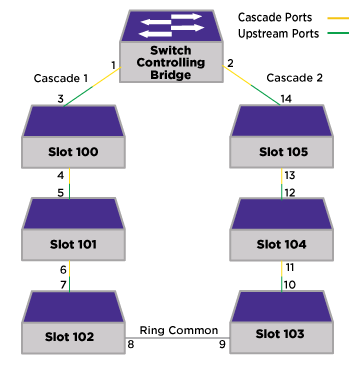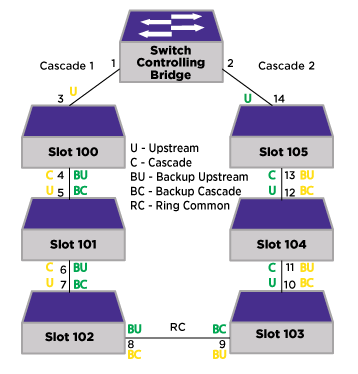Forming a Ring
To form a ring, you configure one or two cascades and allow them to form. After that, you connect the end bridget port extenders (BPEs) of these cascades to each other, or the end of the single unconfigured cascade to a port on the controlling bridge (CB). After establishing the control plane, the formed cascades are as shown in Simple Extended Edge Switching Ring.

In Simple Extended Edge Switching Ring, the “ring common” link between slot 102 port 8 and slot 103 port 9 forms the ring between the two cascades. In a complete ring, the ring common link does not carry data plane traffic. When the cascades were formed, both BPEs have active upstream ports. Since slot 102 port 8 and slot 103 port 9 are up, both begin sending LLDP packets. Using LLDP, the connection between cascade slot 100 to 102 and cascade slot 105 to 103 is discovered, which initiates the ring detection and configuration process.
The completed control plane on a ring establishes two counter-directional cascades with backup cascade and upstream ports that are dynamically configured (Counter-directional Cascades on Completed Ring). While the CB retains knowledge of a ring even when the ring is severed, the BPEs do not. A BPE is only in ring mode when the ring is being brought up or is complete. When not in ring mode, a BPE does not have a backup upstream port or any forwarding information associated to any backup direction.


